Egypt, a land steeped in ancient history and captivating culture, offers a diverse range of breathtaking destinations for every traveler. From the iconic pyramids that pierce the desert sky to the serene Nile River that winds its way through the heart of the country, Egypt boasts a captivating blend of natural beauty and historical significance.
Whether you’re a history buff seeking to discover the mysteries of the pharaohs or an adventure seeker yearning to explore the vast deserts and pristine beaches, Egypt has something to offer everyone. Discover the timeless allure of Egypt and create unforgettable memories that will last a lifetime.
Here’s an in-depth exploration of must-visit places in Egypt:
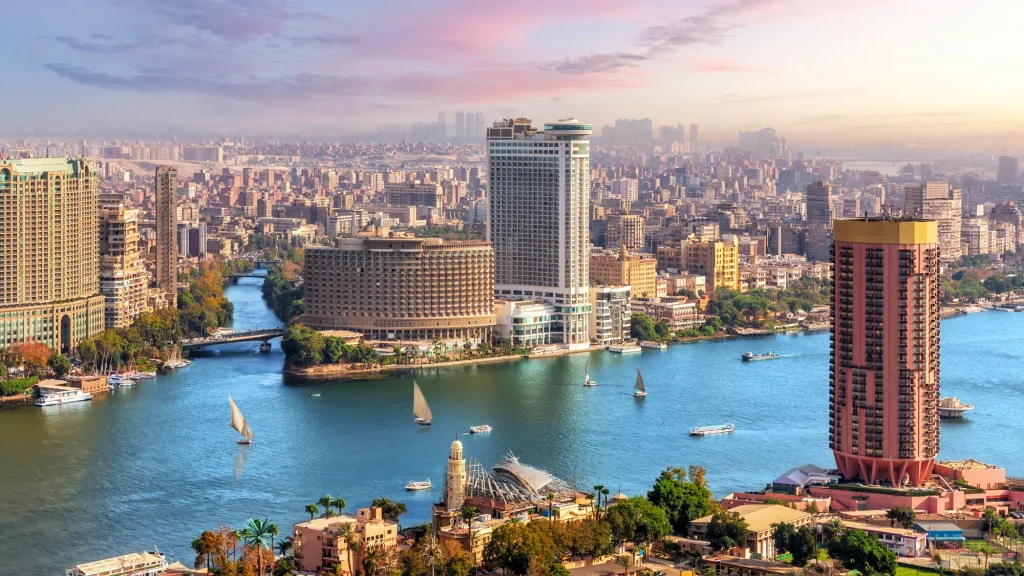
Table of Contents
ToggleCairo, The Heart of Egypt
Cairo, the bustling capital of Egypt, is a lively metropolis that serves as a gateway to the country’s rich history and culture. Here are some of the must-see attractions:
1. The Pyramids of Giza, a UNESCO World Cultural Site, stand as towering testaments to the invention of ancient Egyptian civilization. These enormous constructions, which were constructed more than 4,500 years ago, still enthrall and amaze tourists from all over the world.
The largest of the three pyramids, the Great Pyramid of Giza, is an engineering marvel. A startling height of more than 146 meters, it is made of millions of precisely cut stone blocks.
2. The Egyptian Museum offers a unique opportunity to immerse oneself in the rich and complex culture of ancient Egypt. A highlight of the museum is the legendary treasures of Tutankhamun, which were discovered intact in 1922. These exquisite objects, including the golden funerary mask, ornate jewelry, and intricate chariots, offer a glimpse into the opulence and grandeur of the pharaoh’s court.
Visitors can explore the mummified remains of pharaohs and commoners, marvel at the towering statues of gods and goddesses, and admire the intricate craftsmanship of ancient jewelry and pottery.
3. Khan el-Khalili Bazaar, a labyrinth of narrow alleyways and bustling markets, is a sensory overload that captures the essence of Cairo. This historic bazaar, dating back to the 14th century, is a vibrant hub of activity, filled with colorful shops, street vendors, and a lively atmosphere.
Your eyes will be drawn to the dazzling array of handcrafted goods, including intricate jewelry, colorful textiles, and traditional Egyptian souvenirs. From savory falafel and grilled kebabs to sweet baklava and refreshing koshary, there’s something to satisfy every tastebud.
Another highlight is the Alabaster Mosque, a stunning example of Islamic architecture. Adorned with intricate carvings and inlaid with alabaster, this mosque is a testament to the craftsmanship and artistry of its builders.
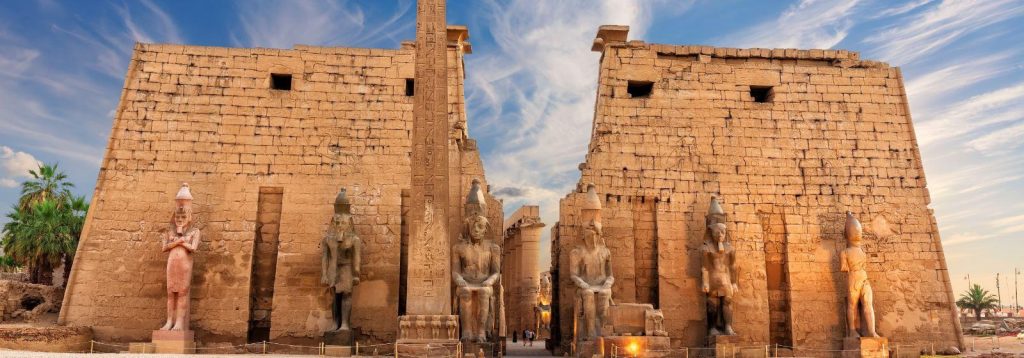
Luxor, The City of a Thousand Gates
Luxor, the “greatest open-air museum in the world,” is situated on the banks of the Nile River. It boasts a wealth of ancient temples, tombs, and other archaeological treasures.
1. The Valley of the Kings:
A Necropolis of Pharaohs amidst the arid landscape of Egypt’s western desert, the Valley of the Kings is a sacred necropolis where pharaohs and their noble families were laid to rest. This ancient burial ground, dating back to the 16th century BC, is a testament to the Egyptians’ elaborate beliefs about the afterlife.
Within the valley’s rocky cliffs lie a series of intricate tombs, each adorned with stunning hieroglyphs, paintings, and sculptures. These artworks depict the pharaoh’s journey into the underworld, their encounters with gods and goddesses, and their hopes for eternal life.
Tutankhamun’s tomb, which was found intact in 1922, is the most well-known tomb in the Valley of the Kings. World attention was attracted to the discovery of this pharaoh’s tomb, which was brimming with priceless artifacts, and it reignited interest in the history of ancient Egypt.
2. The Temple of Karnak
The Temple of Karnak, located in Luxor, is a colossal complex of temples dedicated to the god Amun-Ra, the supreme deity of the Egyptian pantheon. This magnificent site is one of the most significant and striking religious complexes in the world and is a monument to the wealth and power of ancient Egypt.
Each of these structures offers a glimpse into the religious beliefs and practices of the ancient Egyptians.
A visit to the Temple of Karnak is a journey through time. As you explore the vast complex, you can almost feel the presence of the ancient priests and worshippers who once walked these hallowed halls.
3. The Temple of Luxor
Located on the east bank of the Nile River in Luxor, the Temple of Luxor is a magnificent structure that serves as a gateway to the afterlife. This ancient temple, dedicated to the gods Amun-Ra, Mut, and Khonsu, is renowned for its stunning architecture and intricate hieroglyphs. This grand avenue, lined with hundreds of sphinxes, creates a sense of awe and wonder as visitors approach the temple.
The walls of the temple are covered with complex hieroglyphs that depict scenes from Egyptian mythology, religious rituals, and the lives of pharaohs.
The Temple of Luxor offers a peek into the religious beliefs and practices of the ancient Egyptians. It is a place where visitors can connect with the past and appreciate the enduring legacy of this ancient civilization.
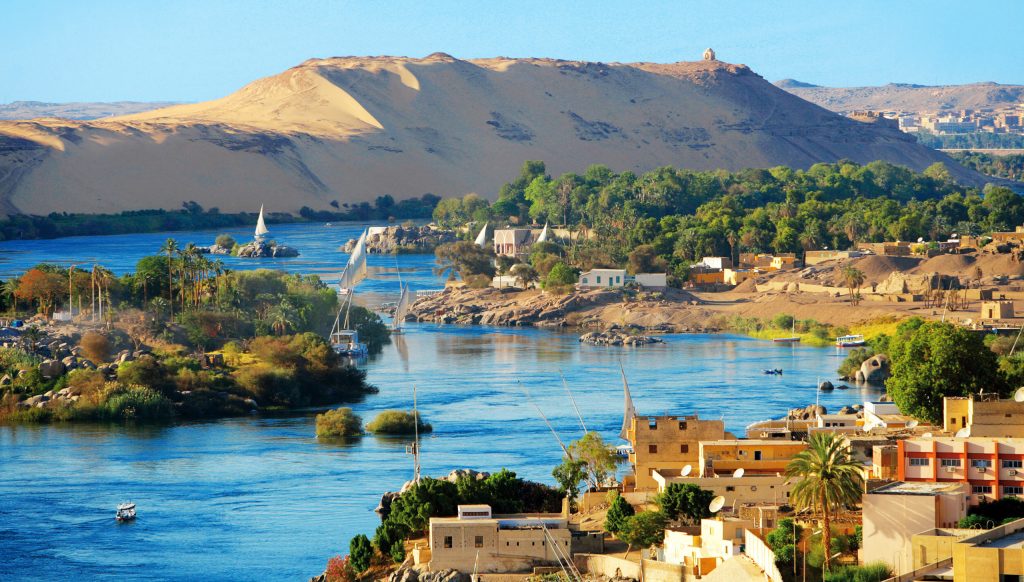
Aswan, A Serene Oasis on the Nile
Aswan, nestled in the southern reaches of Egypt, is a charming city renowned for its tranquil beauty and rich history. Aswan offers a peaceful respite from the bustling towns of northern Egypt.
One of the highlights of visiting Aswan is the opportunity to marvel at the colossal statues of Ramses II and his queen, Nefertari.
1. Abu Simbel Temples: These famous monuments are a testament to the artistic and engineering prowess of the ancient Egyptians, who moved them to their current location to protect them from the rising waters of the Nile.
2. Kom Ombo Temple is a must-visit for those seeking a unique blend of history and nature. This temple, dedicated to two deities—Sobek, the crocodile god, and Horus, the falcon-headed god—offers a fascinating glimpse into the diverse religious beliefs of ancient Egypt.
3. Philae Temple: Another must-see attraction is the incredible temple complex that was relocated to an island on Lake Nasser to preserve it from the rising Nile waters. The temple’s complex carvings and serene atmosphere make it a truly unforgettable experience.
4. Nile River cruise: As you glide along the river, you can enjoy amazing views of the surrounding landscape, visit ancient temples, and experience the serenity of the Nile.
5. Elephantine Island offers a peaceful escape. A botanical garden, a variety of birds, and ancient Nubian ruins can all be found on this island in the Nile River. It’s the perfect place to relax, unwind, and connect with nature.
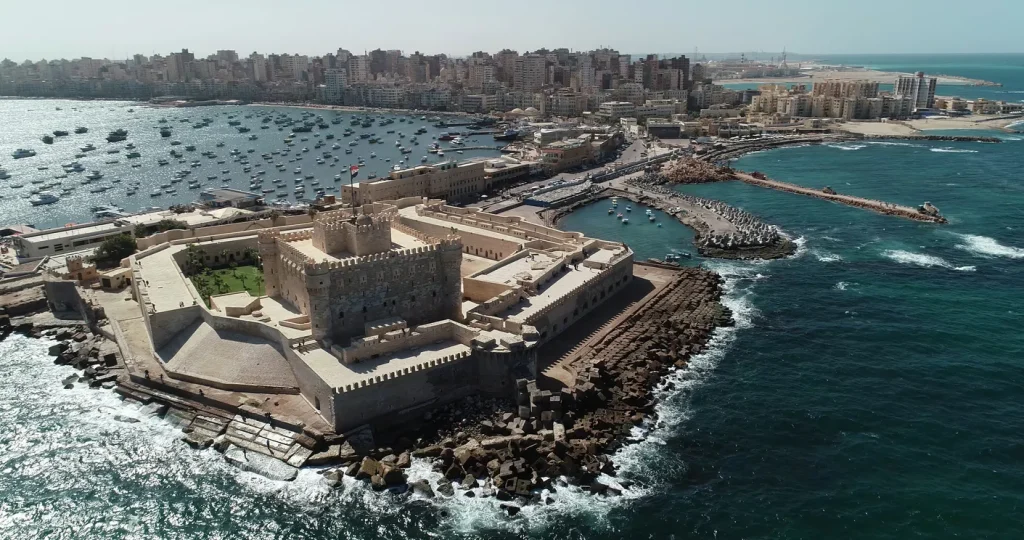
Alexandria, The Pearl of the Mediterranean
Alexandria, a historic city on the Mediterranean coast, was once the capital of the Ptolemaic Kingdom.
1. Pompey’s Pillar: A Monument to Alexandria’s Glory. Pompey’s Pillar is a massive granite column that towers over Alexandria’s busy cityscape, serving as a reminder of the city’s former splendor. This iconic landmark, one of the most enormous standing obelisks in the world, has stood sentinel over the city for centuries.
Initially erected in honor of the Roman emperor Diocletian, Pompey’s Pillar was mistakenly attributed to the Roman general Pompey the Great, hence its name. The column stands at a fantastic height of 21 meters (69 feet) and is adorned with intricate carvings and inscriptions.
2. Alexandria National Museum: Housed in a modern building overlooking the Mediterranean Sea, the museum shows a great collection of artifacts dating back to the ancient Egyptian, Greek, Roman, and Islamic periods. Explore the museum’s exhibits to discover the city’s vibrant past and learn about its role as a center of commerce, culture, and learning.
3. Fort Qaitbay, a majestic fortress overlooking the Mediterranean Sea, stands on the site of the ancient Pharos of Alexandria, one of the Seven Wonders of the Ancient World. The Mamluk Sultan Qaitbay erected the fort in the fifteenth century, and it was a vital line of defense against naval assaults. Today, Fort Qaitbay is a well-liked tourist destination that provides guests with breathtaking city views and an insight into the fascinating past of Alexandria.

Red Sea Coast, A Paradise for Divers and Snorkelers
The Red Sea coast of Egypt is a lovable destination for beach lovers, divers, and snorkelers.
1. Sharm El Sheikh: Sharm El Sheikh, a vibrant coastal town, offers world-class diving and snorkeling in the crystal-clear waters of the Red Sea. Explore vibrant coral reefs, meet diverse marine life, and experience the thrill of underwater adventures. With its warm climate and beautiful beaches, Sharm El Sheikh is a perfect destination for a relaxing and exciting getaway.
2. Hurghada: Hurghada, a famous coastal city on Egypt’s Red Sea, offers a perfect mix of relaxation and adventure. Enjoy sunbathing on pristine beaches, explore lively coral reefs filled with marine life, and indulge in a variety of water sports, such as snorkeling, diving, windsurfing, and kitesurfing. With its warm climate and friendly atmosphere, Hurghada is an attractive destination for a memorable beach vacation.
3. Marsa Alam: Marsa Alam, a lesser-known gem on Egypt’s Red Sea coast, offers excellent diving sites and untouched marine life. Discover hidden underwater wonders, come across uncommon fish species, and explore vibrant coral reefs. For nature enthusiasts and scuba divers looking for a genuine Red Sea experience, Marsa Alam is a haven of pure waters and a serene atmosphere.
4. Wadi El Gemal National Park: Situated on Egypt’s Red Sea coast, Wadi El Gemal National Park is a protected area that presents a singular chance to discover the desert terrain and its varied fauna. Discover a variety of marine life, including dolphins and sea turtles, and observe migratory birds as they pass through the park. With its stunning scenery and rich biodiversity, Wadi El Gemal is a must-visit destination for nature lovers.
5. Saint Catherine Monastery: Visit this historic religious institution at the foot of Mount Sinai, which is supposed to be the site of Moses’ encounter with God.
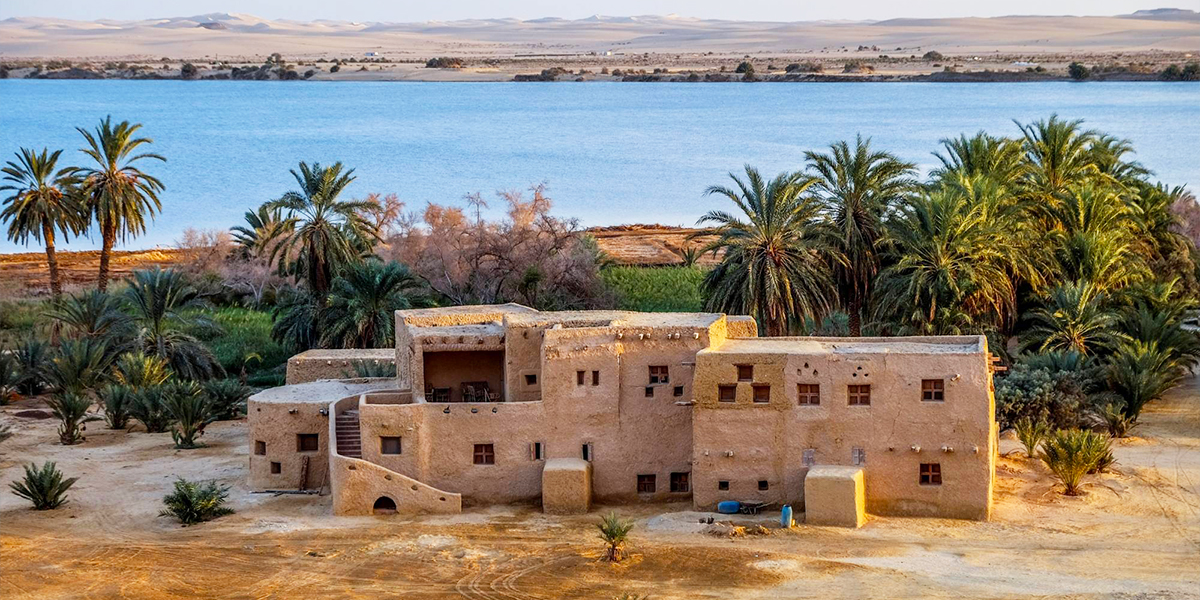
Siwa Oasis, A Hidden Gem
Siwa Oasis is a secluded, tranquil oasis with a distinctive Berber culture that can be found in the Western Desert.
1. Alexander the Great Temple: Visit the temple where Alexander the Great is believed to have consulted the Oracle of Ammon.
2. Shali Fortress: Explore this ancient mudbrick fortress, which offers panoramic views of the oasis.
3. Hot Springs: Experience the natural hot springs, known for their healing properties, and enjoy a relaxing soak.
4. Palm Groves: Wander through the lush palm groves and enjoy the tranquility of the oasis.
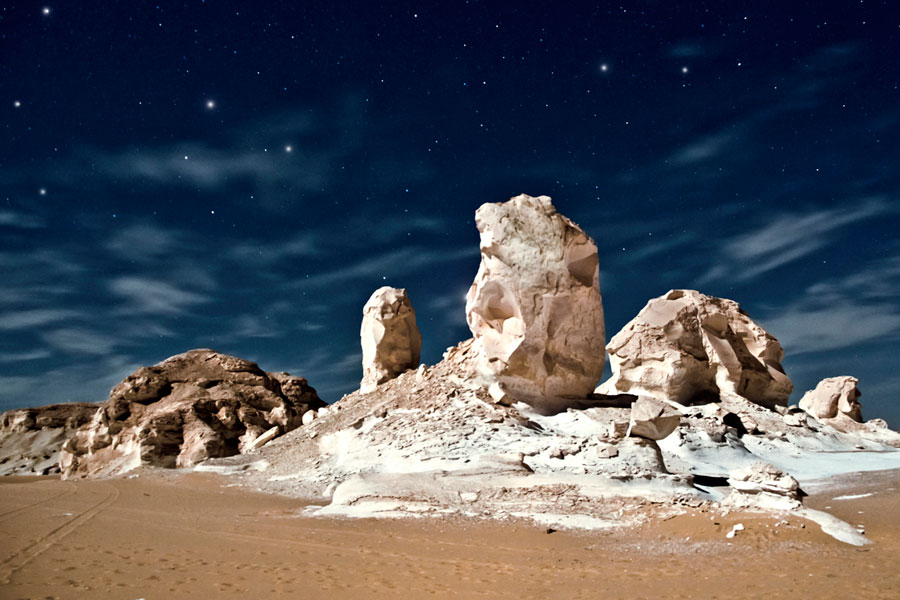
White Desert National Park
The White Desert National Park, located in the Farafra Oasis, is a surreal landscape of chalky white rock formations shaped by wind erosion.
1. Mushroom Rocks: Admire the unique mushroom-shaped rocks, which are a result of wind erosion.
2. Crystal Mountain: Visit this mountain, which is composed of sparkling gypsum crystals.
3. Black Desert: Discover the nearby Black Desert, known for its striking dark volcanic sand.
